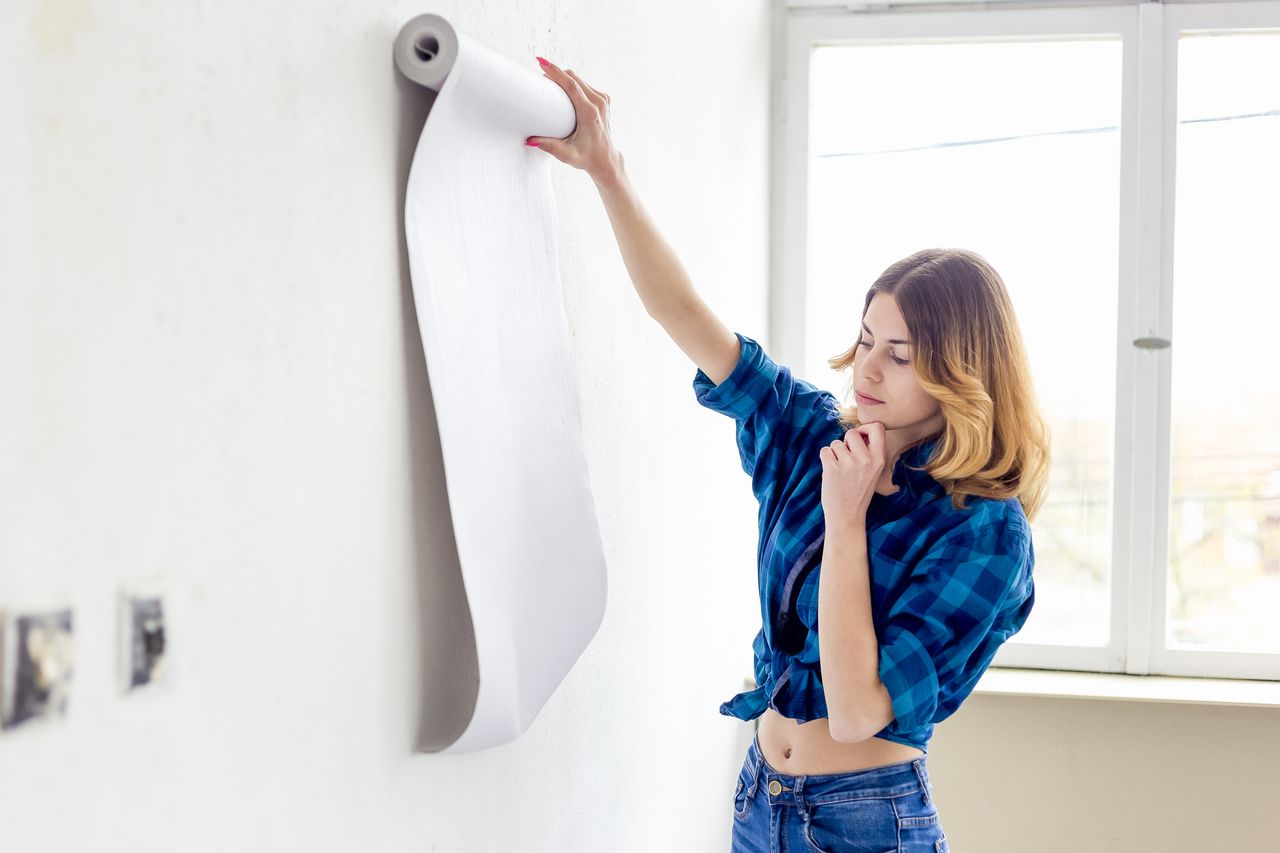

Once you know how to hang wallpaper, it's a great way to add color, texture or pattern to your walls. It may come as a shock but, it's actually a simple DIY job –when you have the right tools and method to hand.
Whether you're installing wallpaper on all four walls of a room or getting creative with feature walls, if you envisage a really cool alcove or a maximalist lounge space with pattern galore, there are so many wallpaper ideas you'll be able to bring to life when you get this DIY down.
Modern wallpaper is available in paste-the-back, paste-the-wall and peel and stick formats. The heavier and more flexible the paper you choose, the easier it is to apply without creases or risking tears. And, the benefit of peel and stick wallpaper is that removing it is a total breeze.
Here’s how to hang wallpaper in a way that works for you.
Where do you start when wallpapering a wall?
Consider the light in the room. If you are wallpapering the whole room start with strong natural light and move away from there, if creating a feature wall this is less relevant.
How to hang wallpaper step-by-step
There's a little debate on whether it's best or simply easier to paste the wall when hanging wallpaper or, whether you should paste the wallpaper. Brand Development Editor for Real Homes and expert DIYer, Laura Crombie, shares her thoughts 'It's definitely easier to paste the wall. However, some papers need the paste applying to them, for it to soak in to work, so you need to check with the product you're using. if it doesn't say, you can do either.' For the rest of this DIY we're pasting the wallpaper but, we've included a section on hanging paste-the-wall wallpaper further down.
DIYer and resident Real Homes blogger Ruth Jackson also prefers to paste the wall, 'I apply the paste right onto the wall with a large paint roller. This is by far the easiest method I’ve found. It saves the hassle and mess of having a pasting table.'
Supplies:
- Dust sheets
- Stepladder
- Bucket of water
- Paper-hanging brush
- Pasting table
- Tape measure
- Plumb line or spirit level
- Pencil
- Wallpaper scissors
- Sponge
- Sugar soap
- Wallpaper – we’re using this Mortimer Yellow Geometric paper by Inspired Wallpaper
- Wallpaper paste
- Seam roller
1. Prepare the space
Wallpapering can get messy so move furniture and soft furnishings out of the room and cover your flooring or anything that can’t be moved with dust sheets (bed sheets will do).
You also want to check that the space you're wallpapering in stays at a warm and fairly constant temperature. Patrick O’Donnell, Farrow & Ball Brand Ambassador voices an important consideration with this DIY. 'Do not apply wallpaper in temperatures below 10°C or excessive heat above 25°C.' This is because, too cool a temperature will increase the drying time, and too warm a temperature could lead to the wallpaper curling at the edges as a result of the wallpaper glue drying out too quickly.'
2. Clean, fill and smooth the walls
Remove any wallpaper that’s already there and sand down any lumps or bumps you find underneath. If you’re papering onto painted walls, then give them a quick sand and wash with sugar soap to help the wallpaper paste to stick.
O’Donnell agrees, saying it's all about the preparation to achieve a professional finish when wallpapering around the home. 'Before papering ensure all surfaces are sound, clean and dry. Remove any traces of dirt, old wallpaper or flaking paint. Fill any cracks, holes and open joints with an appropriate filler.'
3. Make allowances for irregular corners
Walls and corners are rarely straight, so don’t rely on them as a guide when hanging paper. If you’re wallpapering the whole room and are using a standard 53cm/21"-wide roll of paper, use a spirit level to mark a straight link 58cm/23" in from the corner you’re planning to start in. This will allow you a 5cm/2" overlap from the adjoining wall.
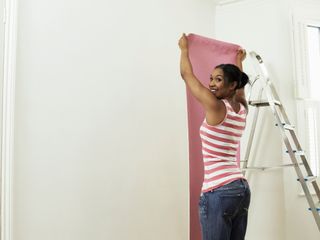
4. Measure the height of the wall
Measure the height of the wall in several places and add 10cm/3.9" to the longest measurement to allow for trimming at the top and bottom.
5. Cut the wallpaper to size
For paste-the-paper wallpaper: Check which way up the pattern goes and then unroll the wallpaper pattern-side down onto the paste table. Use a ruler or spirit level to draw a straight line at the length you measured. Then cut across.
Turn the cut length over. Unroll the next length and place it edge to edge with the first so that you can line the patterns up. Use the cut length as a guide to cut the next piece.
Continue cutting lengths, numbering them in the top right corner on the reverse side so that you know which order to hang them in.
For paste-the-wall wallpaper: The wallpaper can be hung dry from the roll.
7. Hang the wallpaper
Now you’re ready to start hanging wallpaper.
Hanging paste-the-paper wallpaper: Lay the first length pattern side down on the paste table so that the bottom of paper hangs down onto the floor. Load up your pasting brush and wipe the excess on the side of the tub.
Apply paste down the centre of the paper and then work out to the edges in a herringbone pattern.
When the paper covering the table has been pasted, fold it over on itself, taking care not to crease. Continue pasting until the whole length is covered. Between lengths, wipe any paste spills off the table with a clean, damp sponge.
Position the first pasted length at the top of the wall with its right-hand edge running down the line you drew. Make sure about 5cm of excess paper is left above the top to allow for trimming.
Hanging paste-the-wall wallpaper: The first “drop” of wallpaper is key as all others will align to it, so it is important to ensure it is “plumb” otherwise your wallpaper could look wonky.
From the left-hand corner of the wall you are about to decorate measure 50cm and make a pencil mark to give you your starting point.
Using this mark draw a plumb line using either a plumb-bob or spirit level. A plumb line is a vertical straight line, from which you will hang the first “drop” of wallpaper against and ensure it hangs straight down.
Apply the paste liberally to the wall, ideally with a roller (it’s much quicker). You can paste over the plumb line and make sure you apply paste a couple of centimetres wider than the wallpaper you are about to hang. This means you can hang the second “drop” of wallpaper without worrying about applying paste over the first “drop”.
Use a 2” paint brush to add paste at the top of the wall, around sockets or just above baseboards This will ensure even coverage in difficult areas and avoid the wallpaper “lifting” when dry.
Use ladders to get to the ceiling or coving, and allow a little extra product, e.g. 2-3cm at the top. As you hang from the roll lightly brush into place as you go down to the baseboard. Here you can lightly push the paper to the wall. Leave the roll on the floor.
8. Smooth over the surface
Once the right-hand edge is positioned, and vertically correct. smooth the paper down with the paper-hanging brush. Work from the center of the paper to the edges, making sure there are no bubbles. And from the top to the bottom, unfolding gently. Make sure the right edge stays on the pencil line.
9. Trim the edges
With the length in place, crease the top and bottom of the paper against the ceiling and baseboard board junctions. Gently pull the paper away from the wall and cut along the creases with scissors. Brush the trimmed edges back into place.
10. Continue hanging the lengths until complete
For paste-the-paper wallpaper: Fit the next length against the first one, ensuring the pattern lines up. Once you have two or three lengths in place, use a seam roller to flatten the join.
Continue adding lengths until you reach the end of the wall. Chances are you’ll need to cut the final piece vertically. Do this as you have been trimming the top and bottom of each length of paper. Creating a sharp crease in the corner, pull the paper away from the wall slightly and use your wallpaper scissors to cut down. You could also use a very sharp Stanley knife.
For paste-the-wall wallpaper: Working to the right of this first “drop”, paste the wall again allowing a few centimetres wider than the width of the wallpaper. You should see you don’t need to get close to the first drop of paper when doing this.
For the second drop – look to see where the paper matches (the point at which the design fits together along the edges of the wallpaper).
Starting at the top match the paper as you hang it dry from the roll – lightly brushing the paper to the wall as you go. The paper will slide into place on the paste.
When you get to the bottom of the wall – check the pattern matches, and that there are no gaps. If there are bubbles, or mismatches just gently pull the paper back and brush it back down. The paper is forgiving! If it matches you’re nearly there.
Repeat this process around the rest of the room or wall.
Relax and enjoy!
Is paste-the-wall wallpaper easier to hang?
In one word: yes. If you're hanging paste-the-wall wallpaper, this kind of paper does what it says on the tin – you paste the wall, rather than the paper.
The paper has a special backing that means it doesn’t expand when wet, so you can hang it straight from the roll onto the pre-pasted wall. This makes it quicker to apply and easier to remove that standard paper.
B&Q expert recommends to prepare your room as above. Top tip: 'On fresh plaster, “size” the wall – this means make up a diluted solution of paste and liberally apply to the walls being decorated and let it dry. This will be absorbed into the porous plaster and will stop the paste being absorbed when it is applied.'
Note also that you shouldn't paste the entire wall before you start, just paste enough for one length at a time.
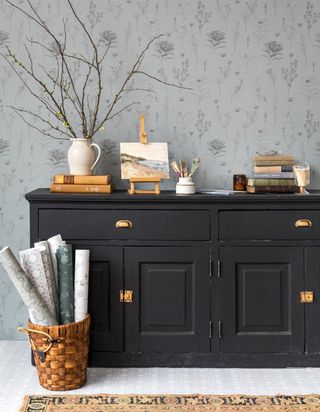
What is the easiest way to hang wallpaper?
Jackson shares her top tips on effortless wallpaper hanging. 'Here’s a few tips and one cheater thing I do that saves me SO much time and effort'.
1. Draw a straight line down the wall to keep the paper level
'I draw a straight line, down the wall, using a large level. Especially in old homes, walls aren’t straight. Starting from a level line versus a corner keeps your paper from getting crooked.'
2. Cut your paper as you go...
'Cheater tip: I cut each strip as I go, right off the roll. I don’t even have to measure. This method also ensures the least amount of waste. I paste the wall, then match up the pattern all the way down the wall. I hold the roll at the top (easier if you have a pal helping), cut, allowing for a few extra inches, with a scissors. I then pull the wallpaper strip off the wall, match up the pattern and use the wallpaper smoother to remove bubbles. Cut at the top and bottom using an exacto knife. Wipe excess paste with a moist rag or sponge.'
3. Always use a wallpaper smoother
'I use a wallpaper smoother as my guide for all the cuts. I didn’t learn this tip until well into my non professional wallpapering career. It’s made such a difference in getting my cuts nice and clean.' Says Jackson.
How to hang peel and stick wallpaper
Peel and stick wallpapers have been making waves in the past couple of years and are the perfect wallpapering alternative for renters in particular or, for anyone who likes to change it up pretty regularly. This is how to hang peel and stick wallpaper in your home successfully, courtesy of chasing paper founder, Elizabeth Rees.
'Prior to applying any wallpaper, wipe down the walls at least a few days ahead of time to allow for the walls to be clean and dry. Removable wallpaper should be installed on smooth walls that have been primed with a premium eggshell, satin or semi-gloss paint. (Matte finishes can be a bit trickier, as the adhesive can bond and pull the paint; textured walls just make it difficult for the wallpaper to stick properly.) If you’re applying fresh paint, just keep in mind that paint can take up to 4 weeks to fully cure.
To make installation a little bit easier, we recommend marking the walls lightly with a pencil at the bottom where a wallpaper panel will end, to ensure that all of the panels are installed evenly. Chasing Paper’s removable wallpaper panels are available in 2 by 4 foot panels, so if you’re using our removable wallpaper, you would:
- Measure with a measuring tape.
- Mark the walls four feet down from the ceiling.
- Repeat again, at the 8 foot mark and so on.
- When you’re ready to install, start at the top of the wall on one side of the room. Peel off the back of just the top of the panel, and slowly peel more of the backing off as you go. Chasing Paper’s peel-and-stick wallpaper is very forgiving, so don’t be worried about messing up! You can just take it off the wall and re-stick. For any tricky spots – like light plates or angled walls – use a ruler and a X-Acto knife to cut out the holes or angles.
- To finish, smooth out the wallpaper with your hands or with a straight object like a ruler or credit card. If you still have an air bubble, just prick it with a small pin to release the air. Repeat until your wall is complete!
- To remove, simply peel back from the wall slowly and voilà!'
How to hang wallpaper around light switches and sockets
Wallpapering around awkward objects and fixtures can make this simple DIY a little more tricky. But it is doable, whether you're wallpapering around windows or a door frame. This is what to do when installing wallpaper around light fixtures or sockets:
1. Make sure the electricity is off and hang the wallpaper as above, using the paper-hanging brush to make a slight impression on the paper.
2. Holding the paper over the fitting, make a small pencil mark from each corner into the centre of the switch or socket. Pierce a hole at the centre point with the scissors and cut along the lines you drew.
3. Trim each triangle just inside the outer edge of the switch of socket. Partially unscrew the faceplate and pull it away from the wall. Carefully ease the faceplate through the hotel and use the brush to tuck the trimmed edges behind. Screw the faceplate back and let the paste dry before turning the power back on.
Expert tips on how to hang wallpaper like a pro
Here are a few more tips from O'Donnell:
- Take care when removing wallpaper: Wallpaper is great for disguising small imperfections on interior walls as the print will draw the eye away but remember when you want to revert to paint, be careful when removing the wallpaper over those small imperfections to avoid bigger ones.
- Wallpapering dark colors: 'Extra care should be taken when hanging dark coloured papers because if they are not butted correctly the edges are more noticeable over a lighter background. If you are unsure, you can achieve the perfect edge, a useful tip is to paint a strip of emulsion in the background colour of the paper where the wallpaper seams will meet on the wall. An oil pastel crayon of the appropriate shade can also be used to colour the edge of the roll whilst in roll form before hanging.'
- Don’t waste a scrap: If you have any wallpaper leftover from a project, don’t let it collect dust in a cupboard – there are many uses you can consider for a random half-roll currently lying redundant. A couple of examples is to use them as a clever motif in a glass-fronted cupboard or, even more wonderful, create a focal point behind your bed with a decorative faux headboard. Four widths of paper should be all you need for most beds, so get out your pencil and scissors and throw caution to the wind. Inside cupboards and interior doors is another great place to start your first adventure into wallpaper and will add impact to rooms that require more detail.
Join our newsletter
Get small space home decor ideas, celeb inspiration, DIY tips and more, straight to your inbox!
Emily first (temporarily) joined the Real Homes team while interning on her summer break from university. After graduating, she worked on several publications before joining Real Homes as Staff Writer full time in mid-2018. She left the brand in 2020 to pursue another career, but still loves a second-hand bargain and sourcing unique finds to make her rented flat reflect her personality.
-
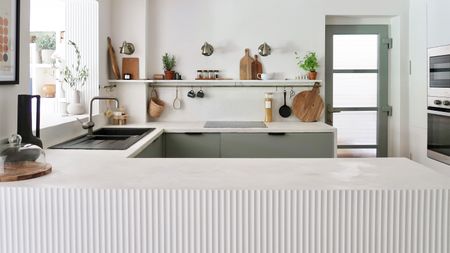 A $200 fluted panel transformed my drab kitchen in just one weekend
A $200 fluted panel transformed my drab kitchen in just one weekendHow to install a fluted kitchen panel: A speedy and achievable DIY tutorial even for DIY novices
By Claire Douglas Published
-
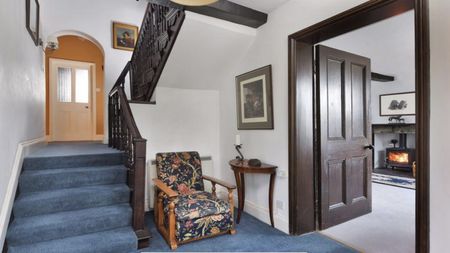 How to replace a broken staircase spindle in 30 minutes flat
How to replace a broken staircase spindle in 30 minutes flatA missing or broken spindle on a staircase is not only unsightly, but it can be a real hazard. This is how to fix it in a few quick steps.
By Kate Sandhu Published
-
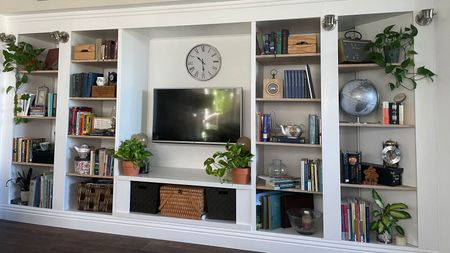 An IKEA Billy bookcase hack inspired this cute media wall DIY
An IKEA Billy bookcase hack inspired this cute media wall DIYThis cute DIY was inspired by an IKEA Billy bookcase hack and brought a ton of symmetry to an otherwise basic media wall space.
By Camille Dubuis-Welch Published
-
 Share your small space glow up to win $150 in the Real Homes competition
Share your small space glow up to win $150 in the Real Homes competitionShow off your creativity and DIY skills to win $150 and for the chance to be featured exclusively in Real Homes magazine
By Camille Dubuis-Welch Last updated
-
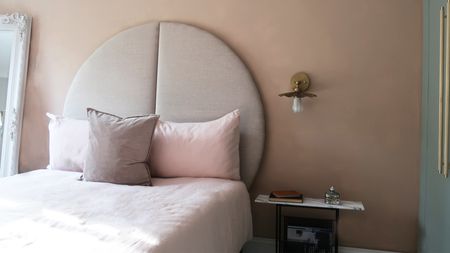 This oversized headboard looks designer, and takes 5 steps to DIY
This oversized headboard looks designer, and takes 5 steps to DIYSuper simple to DIY, this oversized headboard will give your bedroom space all the designer vibes you could dream of.
By Claire Douglas Published
-
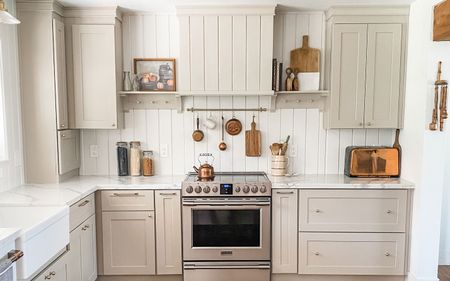 My DIY range hood and backsplash build gave my kitchen the perfect farmhouse finish
My DIY range hood and backsplash build gave my kitchen the perfect farmhouse finishI craved charm in my kitchen space and adding a custom range hood and shelving was the best move.
By Brooke Waite Published
-
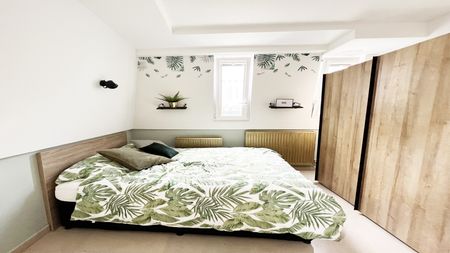 How to paint a radiator in 7 steps
How to paint a radiator in 7 stepsPainting radiators properly is all about choosing the right paint and the best process. Get interior designer-worthy results with our how-to.
By Kate Sandhu Published
-
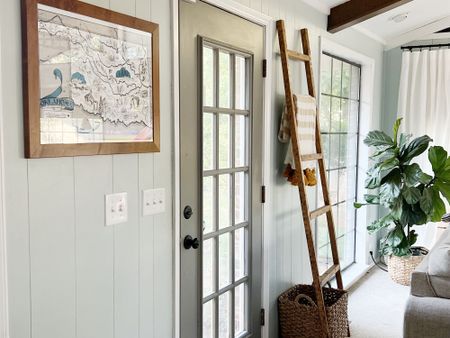 How to install a door knob
How to install a door knobUpdating your interior and exterior doors can be as easy as changing out the hardware! The best part is that installing a door knob is very DIY friendly. Follow these simple steps and enjoy a fresh look on your doors!
By Dori Turner Published
